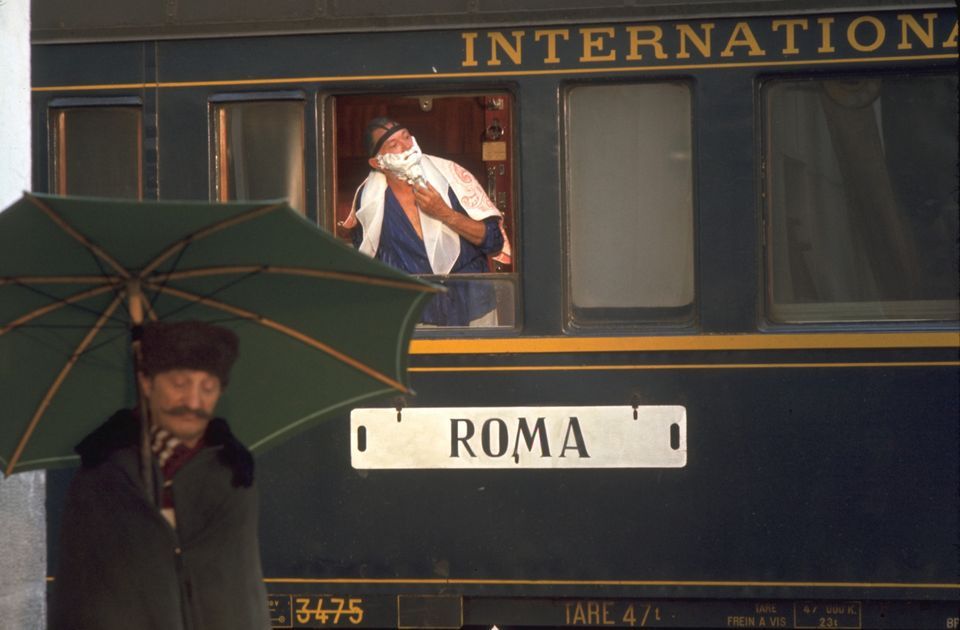
Advertisement
Fellini filmje azzal kezdődik, hogy iskolások tanáruk vezetésével átkelnek a Rubiconon és elindulnak Róma felé. Aztán egy valamivel későbbi epizódban egy fiatalember vág neki a 340 kilométeres útnak. A fiatalember Fellini alteregója, hiszen a rendezőhöz hasonlóan - ha nem is 1938-ban, hanem 1939-ben - a messzi északról (Fellini Riminiben született) délre megy és római lesz belőle. Róma nem hasonlít az északi kisvárosra. Róma zajos, nyüzsgő, büdös nagyváros. Mekkora kupleráj! És állandóan változik. Róma nem lassan hömpölygő nagyregény, sokkal inkább epizódok szövete. Montázs. Temérdek rétege van, mint egy különös tortának. Egy kis antikvitás, egy kis modernitás, egy réteg történelem, még egy réteg átírt, csak az emlékekben élő történelem. Ájtatos és frivol, néha nyers, néha képmutató. Elidegeníthetetlen része az antik kultúra, amely menthetetlenül együtt öregszik magával a várossal.Fellini nem egy szapora szavú cicerone, afféle római idegenvezető, aki végigtereli a turistát a város nevezetességein. Filmjeiben rendszerint különös darabokat ragad ki a városból. Az emberek érdeklik, nem a kövek. S mintha azt is jelezné, hogy annak, aki Rómában él, ez a város természetes élőhely, s nem a látványosságok tára. Biotóp. Még az autópálya is az. Amikor a rendező - önmagát alakítva - elindul az autópályán Rómába, már meg is érkezett. A torlódás tébolya, a bizarr járművek és utasaik már Rómát jelentik. Ahogyan más filmjeiben a panelházak Rómája vagy a Cinecittát körülnövő lakótelepek is azonosak a várossal. Ez a filmje azonban kicsit más. A film végén ugyanis megjelenik a - motoros - városnézés. (Kicsit más, mint a Római vakáció robogós ámokfutása.) Angyalvár, Piazza Navona, Spanyol lépcső, Colosseum… Egy motoros csapat dübörög végig Róma látványosságai között - a néptelen utcákon. Nincsenek emberi hangok, nem szól a zene. A motorok fényszórói emelik ki az éjszakai város kőből való emlékeit. Aztán elszáguldanak.
Olasz nyelven, magyar felirattal.
A vetítést megelőző és az azt követő beszélgetés magyar nyelven zajlik.
//
Fellini's film opens with a scene where a teacher takes his students across the Rubicon River on their way to Rome. Then, in a slightly later episode, a young man sets off on the 340-kilometre journey. He is Fellini's alter ego, since, like the director, he leaves the distant north (Fellini was born in Rimini) to go south and become a Roman, in 1939, instead of 1938. Rome is nothing like the small northern town. Rome is a noisy, bustling, smelly city. What a mess! And it is changing constantly. Rome is not a slow-moving novel, but rather a web of episodes. A montage. It has a multitude of layers, like a peculiar cake. A little bit of antiquity, a little bit of modernity, a layer of history, followed by another layer, which only exists in memories. Pious and frivolous, sometimes rough, sometimes hypocritical. It is intertwined with antique culture, which inevitably ages together with the city.
Fellini is not a fast-talking cicerone, instead he is a guide from Rome, taking his tourists across the city's famous sights. He usually picks odd parts of the city in his films. He is interested in people, not in the building blocks. As if to show that for those who live in Rome, this city is a natural habitat, not a place of spectacles. A biotope. Even its motorway. When the director - playing himself - sets off to Rome on the motorway, he has already arrived. The madness of the traffic jam, the bizarre vehicles and their passengers already signify Rome. Just like in other Fellini movies, where the Rome of prefabricated buildings and the housing estates around Cinecitta are the city itself. This movie, however, is slightly different. The closing scene shows a motorcycle gang taking us through Rome. (Slightly different to the frantic scooter scene in Roman Holiday.) Castel Sant'Angelo, Piazza Navona, the Spanish Steps, the Colosseum... the motorcycle gang roaring through the sights of Rome - through empty streets. There are no human voices, no music. Motorcycle headlights illuminating the night-time city's stone-clad mementos before speeding away.
In Italian, with Hungarian subtitles.
The discussions before and after the screening will be conducted in Hungarian.
///
A Müpa social media házirendje:
https://www.mupa.hu/kozossegi-mediafeluleteinkre-vonatkozo-szabalyok
https://www.mupa.hu/en/social-media-policies
Advertisement
Event Venue & Nearby Stays
Müpa Budapest, Komor Marcell utca 1., Szekesfehervar, Hungary
Tickets
